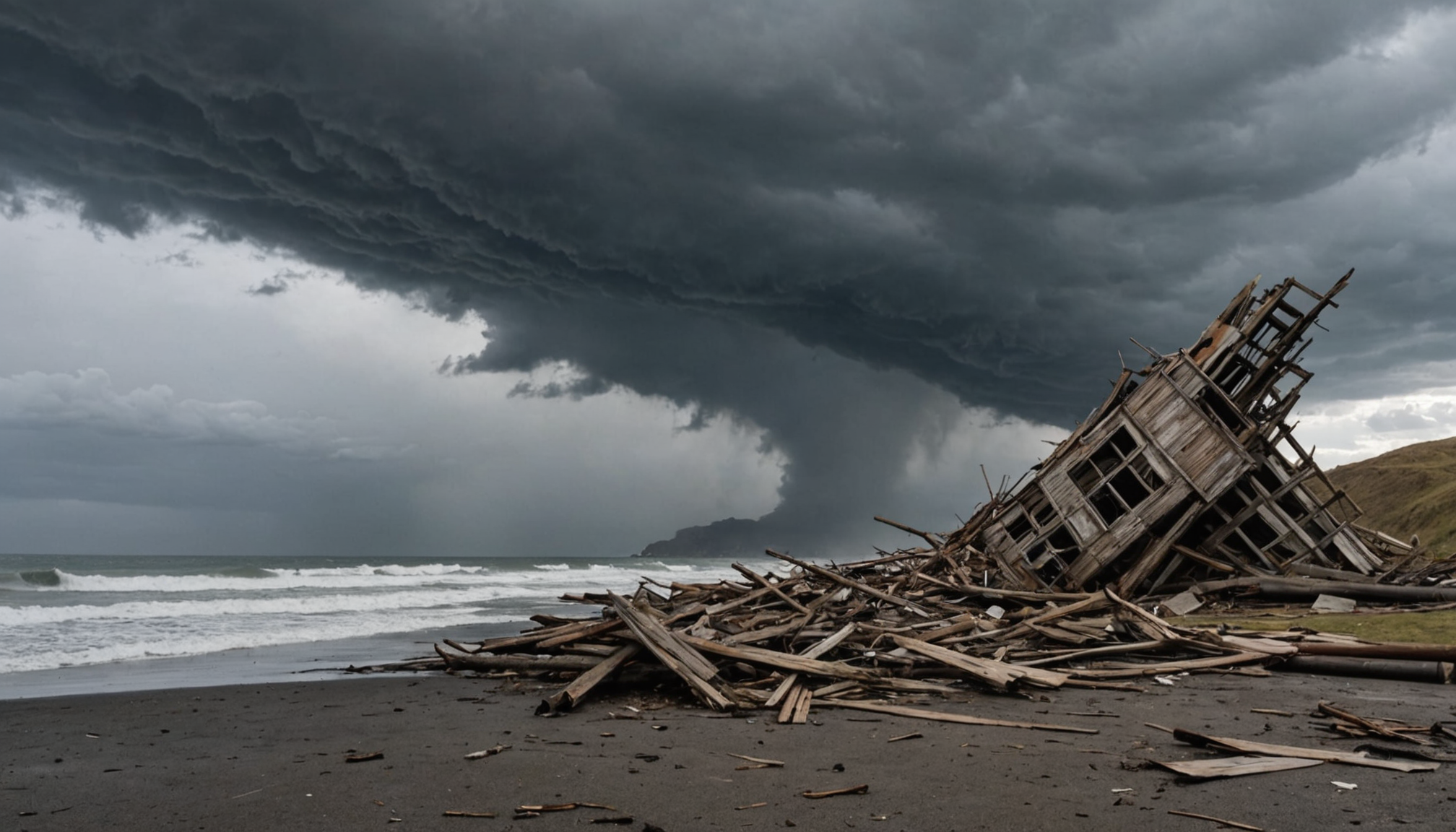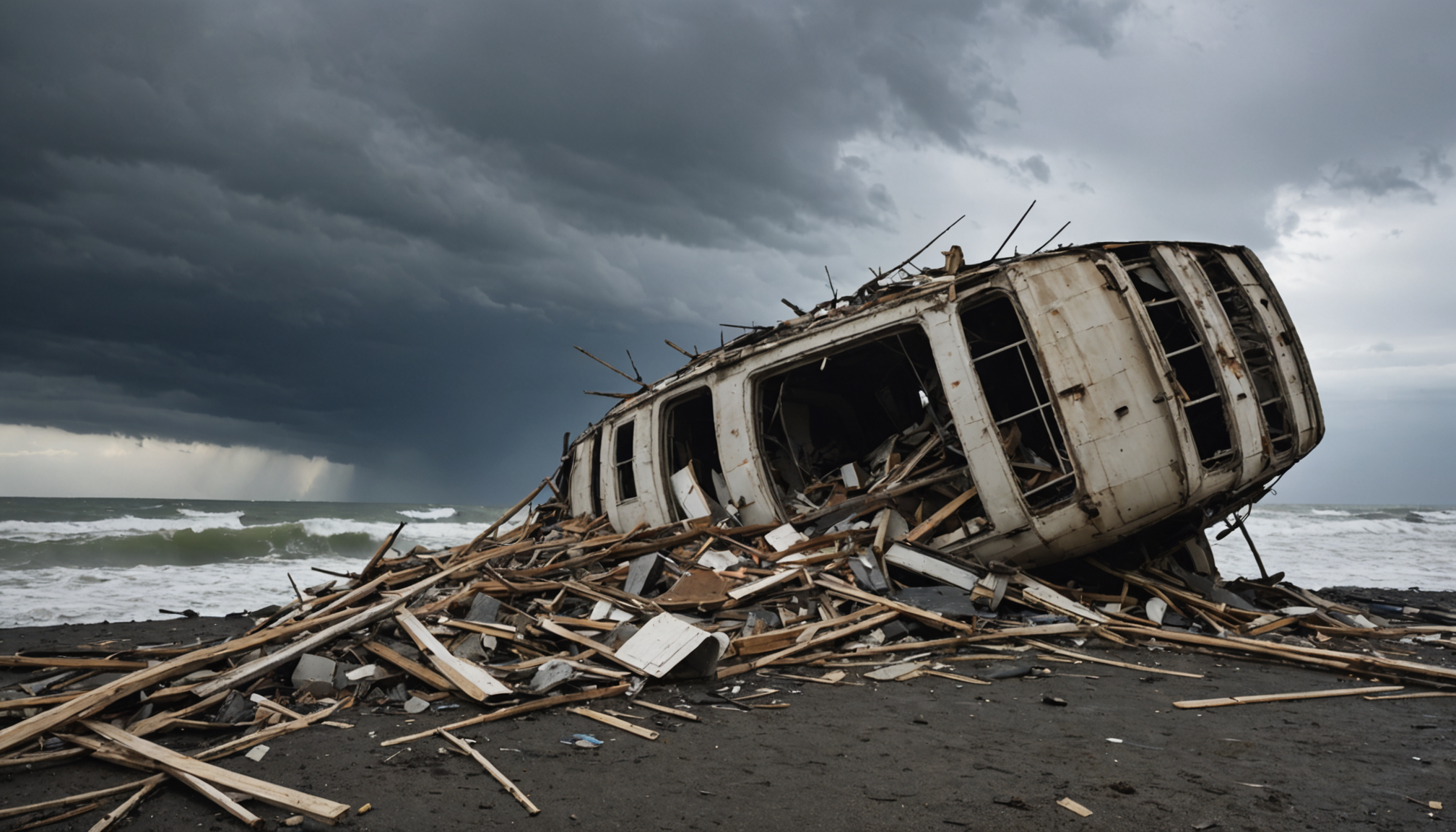 Before diving into windstorm damage and its effects, it is essential to understand the forces at play and how they impact residential structures, particularly elements like soffits and fascia. Homeowners in St. Louis and other regions prone to severe weather must be aware of these issues to protect their homes effectively.
Before diving into windstorm damage and its effects, it is essential to understand the forces at play and how they impact residential structures, particularly elements like soffits and fascia. Homeowners in St. Louis and other regions prone to severe weather must be aware of these issues to protect their homes effectively.
Windstorms often cause significant damage to homes, especially in areas like St. Louis, which can experience severe weather events. These phenomena are usually accompanied by powerful wind gusts that have the potential to wreak havoc on the exterior components of houses. Soffits and fascia, which are crucial parts of a building’s roof and gutter system, are particularly vulnerable during such storms.
The damage inflicted by windstorms arises primarily from the intense pressure differences caused when wind speeds increase dramatically. This pressure disparity can lift and dislodge roofing materials and structural elements, causing soffits and fascia to detach from the house. When wind speeds reach a high velocity, the wind pressure against the home’s exterior surfaces can become sufficient to forcefully remove less securely fastened elements.
Moreover, the debris carried by these fierce winds poses additional threats. Branches, loose tiles, and other materials can strike the soffit and fascia, leading to punctures, cracks, or complete dismemberment of these structures. According to the National Oceanic and Atmospheric Administration (NOAA), wind gusts as low as 50 to 60 mph can start causing roof damage, emphasizing the vulnerability of soffits and fascia during such events.
The orientation of a house relative to the prevailing winds and the quality and age of the construction materials also play a significant role in how a structure withstands a windstorm. Homes with older or poorly maintained soffit and fascia installations are more susceptible to damage, as wear and aging can reduce their resistance to wind stress. Therefore, understanding these elements’ functioning and maintenance is vital to minimizing wind damage.
To protect homes effectively, homeowners must not only recognize the risks associated with windstorms but also take timely actions to mitigate these threats. Addressing old, damaged, or improperly installed soffits and fascia can drastically reduce the potential for extensive repairs after a storm. By understanding the causes of wind damage, individuals can better prepare for and respond to the challenges presented by severe weather events.
Identifying soffit and fascia issues
Identifying issues with soffits and fascia after a windstorm can be crucial to maintaining the overall integrity of your home’s exterior. Homeowners in St. Louis, where windstorms can be frequent, need to inspect these elements closely following severe weather events to prevent further damage. The signs of damage can vary, but there are key indicators to look out for when assessing soffits and fascia immediately after a storm.
First, examine the area for any obvious signs of physical dislocation. Walk around the perimeter of your home and look up at the soffits and fascia for noticeable misalignments or outward splits. These components are often loosened or entirely detached during strong winds, creating gaps, and allowing water and pests to intrude.
In addition, scrutiny for visual damage is essential. Check for cracks, dents, or holes on the fascia boards, as these weaken the structural ability of the components to support gutters and protect the façades from water infiltration. The soffit, typically located beneath the fascia, should be free of visible cracks or warping. Warping can indicate that moisture has become trapped, potentially compromising the roofing system over time.
Inspecting for moisture leakage is another important step. Examine any potential water stains or mold on the wall beneath your soffits and fascia. This is a sign that these elements may have been compromised, which could lead to more significant issues with the roof or interior walls if not addressed swiftly.
Check for signs of infestation or nesting. Gaps created by wind damage become entry points for small animals or insects, which can further damage the already weakened structure. Observe for signs like wasp nests or rodent droppings, which are indicative of unwanted intrusions.
Finally, do not overlook the importance of an audible inspection. Listen for rattles or unusual noises during windy conditions, which often signal loose elements that need securing or replacing. Continuous noise might indicate serious detachment that requires professional evaluation.
Following these guidelines will ensure that issues with your soffits and fascia are identified promptly, minimizing the risk of further damage and costly repairs. Consider engaging a professional for a comprehensive inspection if you’re uncertain about the process or extent of the damage.
- Regularly inspect soffits and fascia after windstorms for any dislocation or alignment issues.
- Look for visual signs of damage such as cracks, dents, or warping on both soffits and fascia.
- Check for moisture stains or mold growth as they can indicate water infiltration.
- Be aware of signs of infestation or nests in gaps created by wind damage.
- Listen for unusual noises during windy conditions which might indicate loose elements.
Steps for effective repair
When embarking on the repair process for damaged soffits and fascia, there are several critical steps to ensure effectiveness and longevity. Properly addressing these repairs is particularly important for homeowners in areas like St. Louis, where wind damage is a frequent concern. To start, gather the right tools and materials, including a ladder, hammer, nails, screws, saw, caulk, silicone sealant, a utility knife, replacement soffit, and fascia boards, as well as safety equipment like gloves and goggles.
Begin by ensuring safety precautions are in place. Use a sturdy ladder to gain access to the roof line, and always work with a partner when possible to avoid accidents. Once you’re properly equipped and in a secure position, it’s time to remove any damaged materials. Carefully detach the torn or detached segments of the soffit and fascia, taking care not to cause further harm to the remaining structure. Use a pry bar or a hammer to carefully pull out nails or screws and remove any old caulking or sealing material.
Next, closely inspect the underlying structure for any additional damage that needs addressing before installation. Look for signs of rot or decay on the wood beneath the soffits and fascia. It is paramount to repair or replace compromised wooden elements to ensure the new boards will be installed on a solid base. If mold or mildew is present, treat these areas with appropriate mildew remover or bleach solution to prevent future issues.
Once the removed sections are addressed, measure and cut the new soffit and fascia boards to size. Ensure precise cuts for a snug fit that will withstand future windstorms. Use a saw for larger cuts and a utility knife for finer adjustments. Position the new boards into place, starting with the soffit. Secure them with nails or screws, making sure they are flush with the adjoining surfaces to prevent gaps where water or pests might enter.
After installing the new boards, use silicone sealant to fill in any small gaps or joints. This will help to protect the structure from water infiltration and provide an additional barrier against wind. Ensure the sealant is applied smoothly and evenly, and follow the product instructions for curing time.
In some cases, particularly with extensive wind damage, it might be beneficial to apply reinforcements like metal brackets for added durability. This extra step can provide additional protection against future storms and extend the lifespan of the repairs.
By following these methodical steps, homeowners can achieve reliable and lasting repairs on their soffits and fascia, effectively shielding their homes from the unpredictable weather patterns prevalent in St. Louis and similar areas. Regular maintenance and inspection routines in the future will help in early identification of issues, making necessary repairs manageable and less frequent.
Materials needed for repair
When planning to carry out soffit and fascia repairs following wind damage in St. Louis, having the right materials is essential for ensuring a durable and effective outcome. First and foremost, obtaining high-quality soffit and fascia boards is paramount. Choose materials that offer durability and resilience against extreme weather conditions, such as vinyl or aluminum, which can withstand the impact of fierce winds typical in this region.
Next, you will need a variety of fasteners, including stainless steel or galvanized nails and screws, designed to resist rust and corrosion. These fasteners should be suitable for exterior use as they will hold the soffit and fascia in place against the forces of future windstorms.
Silicone sealant is another crucial material needed for the repair. Opt for a weatherproof sealant suitable for exterior applications, which will help to form a watertight seal and prevent moisture infiltration—a common problem due to soffit or fascia damage. This can protect the underlying wood and extend the lifespan of your repairs.
A reliable caulking gun is necessary for applying the sealant effectively along the seams and joints. Also, have a utility knife on hand for precision cutting of soffit panels and fascia boards to fit them accurately into place. This tool will prove invaluable for achieving the snug fit required to prevent any gaps that could allow water or pests to enter.
Additional materials such as a high-quality primer and paint designed for exterior use may be needed, especially if you’re using wooden soffit and fascia boards. This will provide a protective layer, helping to safeguard against weather damage while also allowing you to match the existing color of your home for a seamless repair.
Finally, consider investing in metal brackets or additional support structures to reinforce the soffit and fascia installation. These can provide extra stability and resistance against the gusty winds experienced in windstorms, reinforcing the repair work and enhancing the reliability of the installation.
Equipping yourself with these essential materials not only prepares you for efficient repairs but also ensures that your home’s exterior will withstand the next round of unpredictable St. Louis weather. Taking proactive steps, such as selecting durable materials and employing proper installation techniques, empowers you to safeguard your home against future elements. Embark on this repair journey with confidence, knowing that your efforts will contribute to maintaining the integrity and appearance of your home’s exterior in the face of wind damage.
Preventative measures for future storms
- How can I prevent wind damage to my soffit and fascia in St. Louis?
- Regular maintenance and inspections are key. Ensure all components are securely fastened and replace any damaged or worn materials promptly. Consider installing durable materials like vinyl or aluminum, which are more resistant to wind damage.
- What materials are best for reinforcing soffits and fascia?
- Vinyl and aluminum are excellent choices due to their durability and resistance to weather. Stainless steel or galvanized fasteners are also recommended to prevent rust and ensure a secure hold during windstorms.
- Can I install protective measures to shield against future storms?
- Yes, installing metal brackets or additional supports can reinforce existing structures. Adding a weatherproof sealant along seams and joints can also help prevent water infiltration that often accompanies wind damage.
- How frequently should I inspect my soffit and fascia?
- Inspect these elements at least twice a year and after every major storm. Regular checks help in identifying and addressing potential issues before they lead to significant damage.
- What should I do if I notice damage after a storm?
- Conduct a thorough inspection and address any loose or damaged pieces immediately. If you’re unsure about the extent of the damage or how to repair it, consult a professional for an assessment and repair plan.
